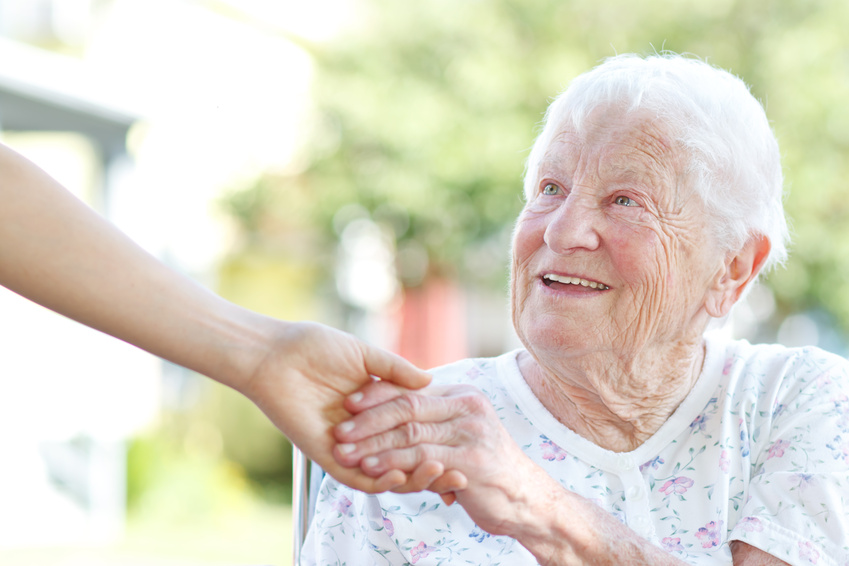
Do your students struggle demonstrating caring and empathy in the clinical setting?
Do you find that some need a gentle nudge to get them moving in the right direction?
I too have taught students who needed guidance in this important and foundational area of nursing practice. This should be expected as a novice student. The question is how to guide them to develop this important aspect of practice.
I am excited to share some simple yet successful approaches based on nursing research that you can use with your students to develop empathetic caring in the clinical setting.
I came across a small spiral bound book titled 160 Ways To Empathize in the break room this past weekend that immediately caught my eyes. The author, Colleen Sweeney wrote this book based on a three-year research study that identified patient fears and involved interviews with over 1000 patients.
During this research, she discovered that 96% of all patients have serious fears about healthcare. But a caring empathetic nurse can make a difference!
The following empathetic caring strategies that Sweeney identified are derived from her research, and come directly from the patient’s comments and experience.
Empathy Defined
The essence of empathy is the ability to understand and experience an event from the other’s perspective.
In the clinical setting, it is imperative that the student be able to readily place themselves in the patient’s shoes and attempt to identify and understand all that the patient is encountering and experiencing from their perspective.
The following are patient responses that they shared as important and communicated empathy (Sweeney, 2012). These responses are simple yet successful strategies to guide students to be empathetic caregivers beginning with the very first patient contact of the day:
Entering the room for the first time:
- Always knock before entering the patient’s room. Remember it’s their bedroom
- Tell the patient your name, school where you are a student and why you are there
- Ask the patient how they want to be addressed. Be sure to avoid calling the patient honey, sweetheart, or darling
- If the spouse or significant other or family members are present, ask for their first name and use it throughout the day
- Before leaving the room, ask if there is anything else the patient needs
- When you leave the patient’s room, always offer to shut the door. Give them the choice
Beginning of the clinical day
- Do not immediately start doing vital signs and tasks. Instead remove the stethoscope from your shoulders, sit at their bedside and ask them how they are doing today. Engage person to person, not nurse to patient
- Start your shift by asking your patient about their greatest fear or concern they may have
- Have your patient then identify their greatest hope and goals
- Encourage the patient to share their story. This can involve the number of children, grandchildren, or their interests or hobbies
- Know what is most important about your patient and then give them opportunity to talk about it
Patient/family education
- Explain every piece of equipment in the room and assume nothing about the patient’s medical knowledge. Keep it simple!
- Explain everything that you are doing and why he was doing it
- Avoid medical terminology and abbreviations that you are familiar with but the patient likely will not be
- Explain why you are wearing gloves. Patients may believe they are dirty
While providing care
- Honor and respect their privacy and keep them appropriately covered at all times
- Offer a soapy washcloth to cleanse their hands before eating
- Keep the patient’s room clean. A clean room is a healing environment
- Anticipate the needs of your patient. This includes the need for water or pain medications
- Offer a back rub, wash hair, or give a shave to your male patients. They will appreciate this extra effort!
General
- If your patient is from a different culture ask relevant questions. You will increase your cultural sensitivity and it also shows that you care
- Never share your problems with your patient. It’s always about them that you
- Never tell a patient how tired or busy you are.
- Make sure all visitors have a place to sit
- Let your patient know what the current weather conditions are. You may be their only connection to the outside world
- Encourage your patient by letting them know what they are doing well
Foundational Principles of Practice
- Take care and treat each patient as you would a beloved family member
- Treat your patient the way that you would want to be cared for
- Remain 100% engaged about why you are in the clinical setting and maintain your focus on the patient at all times.
- Remind yourself that you have been called to do the most important work in the world as a nurse!
In Closing
Be sure to share these simple but research based strategies with your students and make sure that they integrate into their practice.
Though it is easy to assume that our students have a strong sense of caring and empathy as nursing students, it is imperative that nurse educators emphasize and intentionalize caring and caring behaviors in the clinical and curriculum.
There are also many more excellent suggestions on how to communicate empathy to your patients in this little spiral notebook 160 Ways to Empathize that are worth checking out!
Comment question:
What other strategies have you found successful to guide students to develop empathy and caring in the clinical?
Comment below and let the conversation begin!
References
Sweeney, C. (2012). 160 ways to empathize.
Keith Rischer – PhD, RN, CEN
As a nurse with over 35 years of experience who remained in practice as an educator, I’ve witnessed the gap between how nursing is taught and how it is practiced, and I decided to do something about it! Read more…
The Ultimate Solution to Develop Clinical Judgment Skills
KeithRN’s Think Like a Nurse Membership
Access exclusive active learning resources for faculty and students, including KeithRN Case Studies, making it your go-to resource.



